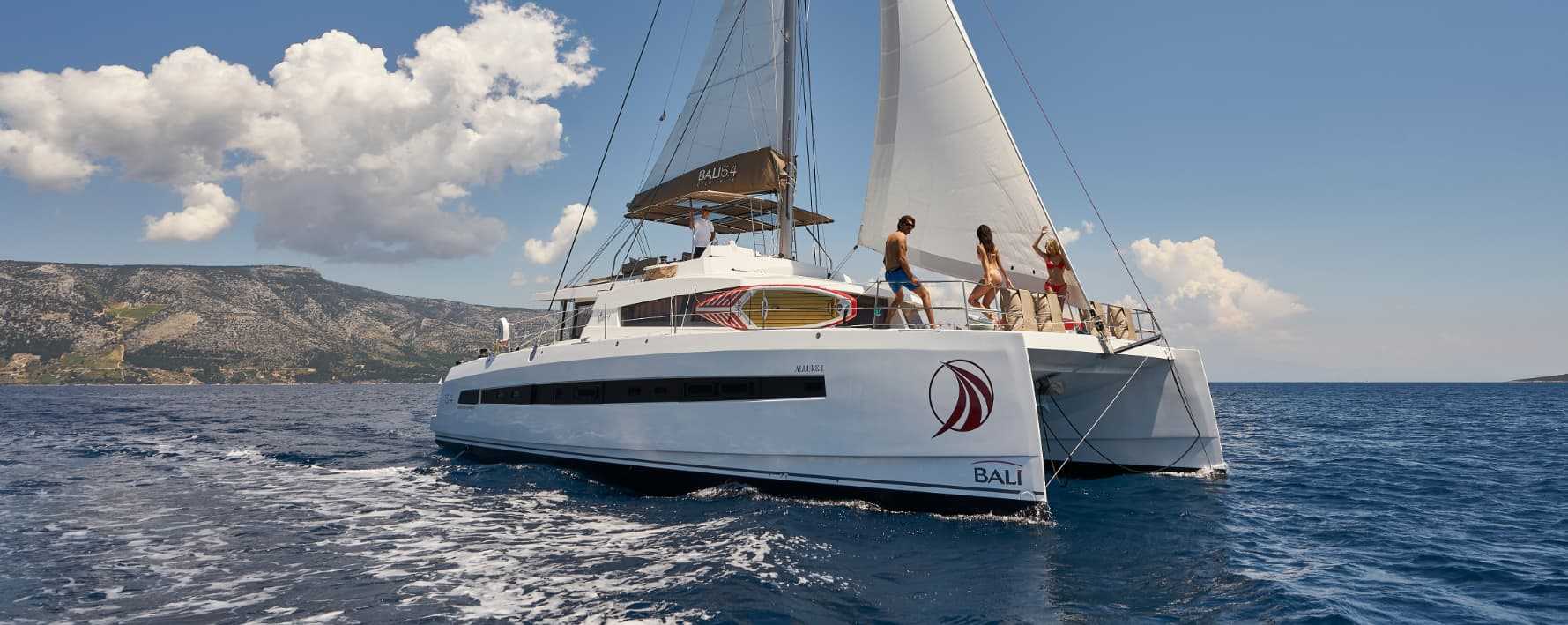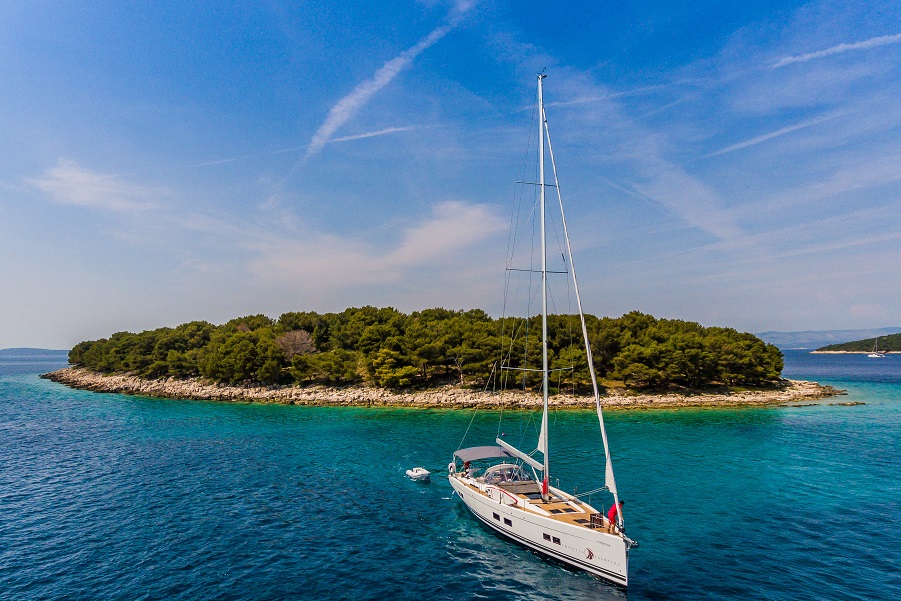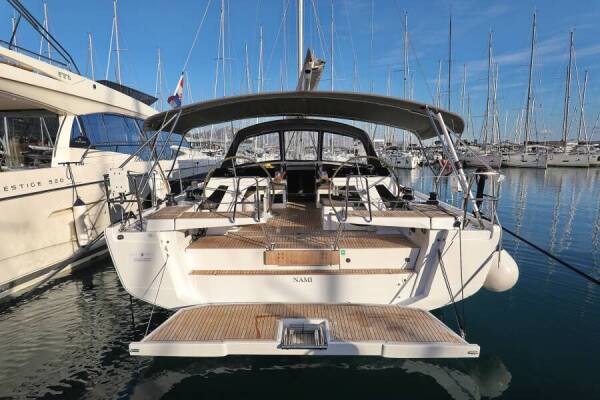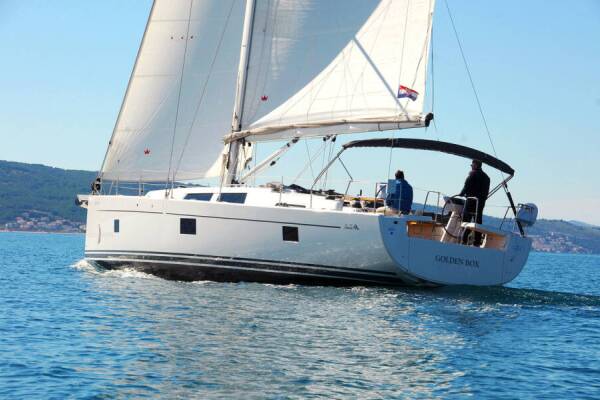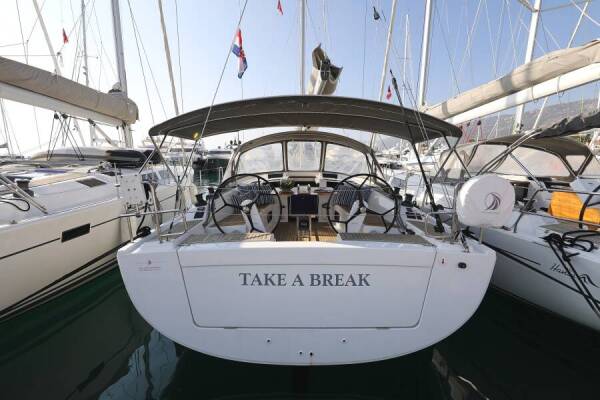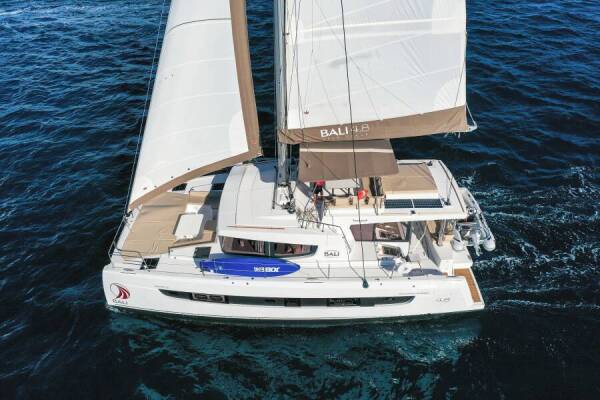Best time to Sail in Croatia - Finding the perfect season

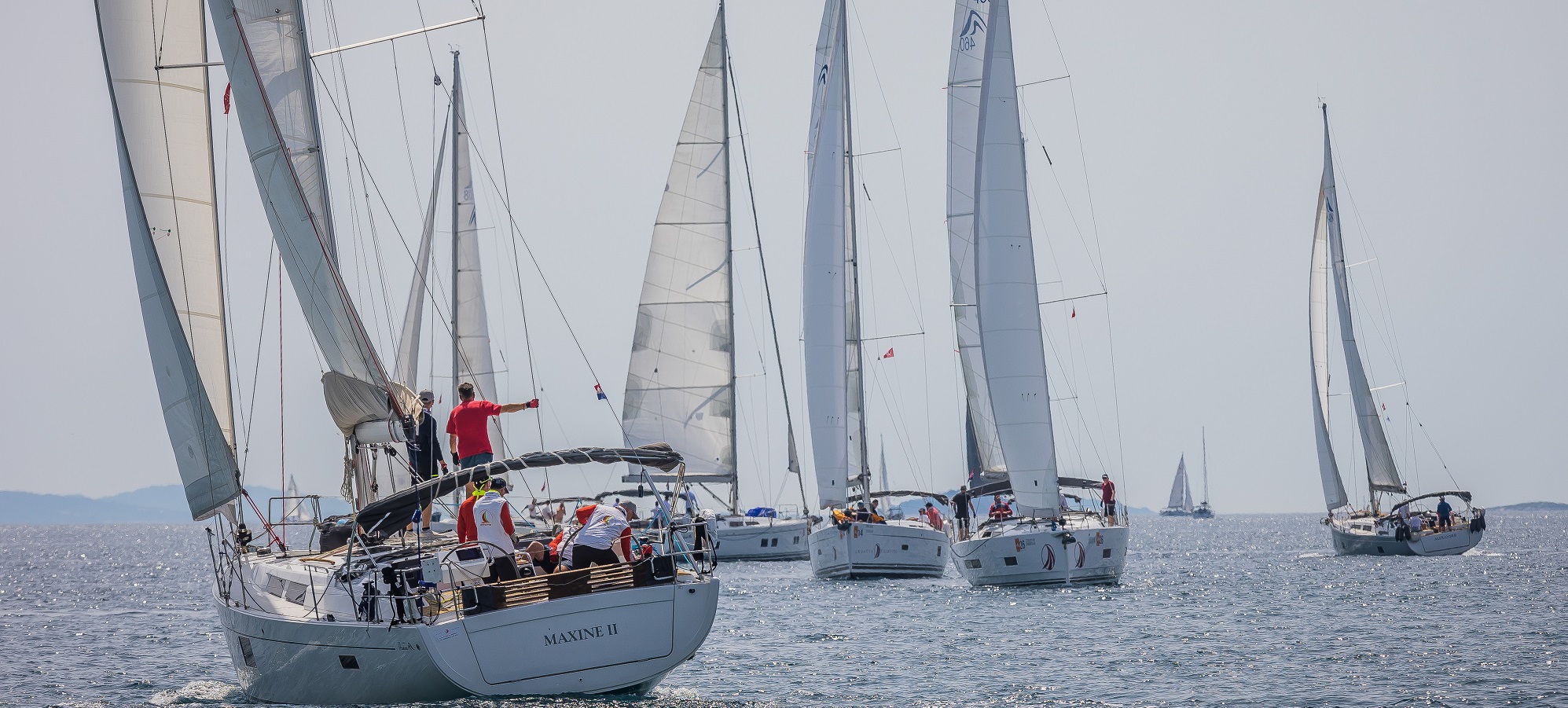 BLOG
BLOG
Table of Contents
- When is the best time to sail in Croatia?
- Sailing Croatia during Summer (High Season) - Time for watersports and partying
- Sailing season Croatia
- Sailing Croatia during Spring and Autumn (Shoulder season) - Overall best experience
- Sailing Croatia during Winter (Low season) in Croatia - Perfect for bonding with nature
- Sailing Dalmatian islands
- Croatia’s unique sailing conditions and weather characteristics
- Best time to sail in Croatia – Timing is everything.
When is the best time to sail in Croatia?
Sailing in Croatia in May, June, September, and October is the perfect choice for those seeking the ideal combination of pleasant weather, fewer crowds, and fully operational hotels and tour operators. For sailors, this period truly stands out as the best time to travel to Croatia, offering exceptional conditions to explore its indented coastline and numerous islands.
To help you decide the best time to cruise in Croatia, we’ll break down the entire sailing season and share insights so you can plan your perfect adventure.
| Month | Advantages | Disadvantages |
|---|---|---|
| May | Comfortable weather, fewer crowds, operational tourist services, good for water sports | Some businesses and attractions may not be fully operational yet |
| June | Warm and sunny weather, ideal for water sports, cultural events and festivals | Beginning of peak tourist season, starting to get crowded |
| July | Hot weather perfect for sunbathing and swimming, peak of cultural events and nightlife | Very crowded, peak tourist season, higher prices |
| August | Continuation of warm, sunny weather, great for swimming and outdoor activities | Crowded, high season with higher prices |
| September | Milder temperatures, fewer tourists, pleasant for outdoor activities | Some businesses might begin to close, especially towards the end of the month |
| October | Reduced crowds, mild weather, budget-friendly | Many tourist services and businesses might be closed or have limited operations |
| November | Quiet, fewer tourists, close connection with local culture | Colder weather, limited tourist services, many businesses closed |
Sailing Croatia during Summer (High Season) - Time for watersports and partying
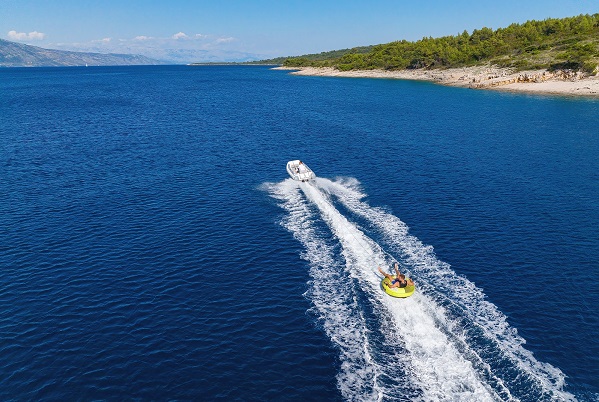
Sailing season Croatia
If you're looking to engage in watersports such as swimming, snorkeling, scuba diving, sailing, and more, you should schedule your visit to Croatia for the summer season, spanning from June to September. The weather during these months is generally warm and sunny, with temperatures ranging from comfortable to hot, especially in July and August. If you like hotter weather for sunbathing on the deck and swimming from the boat, summertime is the answer.
Sailing in Croatia in June
June marks the beginning of the tourist season in Croatia, offering calm seas, warm but not overly hot weather, and fewer crowds compared to peak months. It's the perfect time for those who want to explore the Dalmatian islands in a more tranquil setting. Marinas are fully operational, and sailing conditions are ideal for beginners and experienced sailors. Early summer also brings lush greenery and vibrant coastal landscapes.
Sailing in Croatia in July
July ushers in the heart of summer, with long sunny days and lively coastal towns. The Dalmatian islands become a hub of activity, attracting visitors eager to soak up the sun and explore Croatia's pristine waters. Popular destinations like Hvar, Brač, and Vis buzz with energy, offering a mix of vibrant nightlife and natural beauty. For sailors, this is the time to embrace the full vibrancy of the season, though it's recommended to book mooring spots in advance due to high demand.
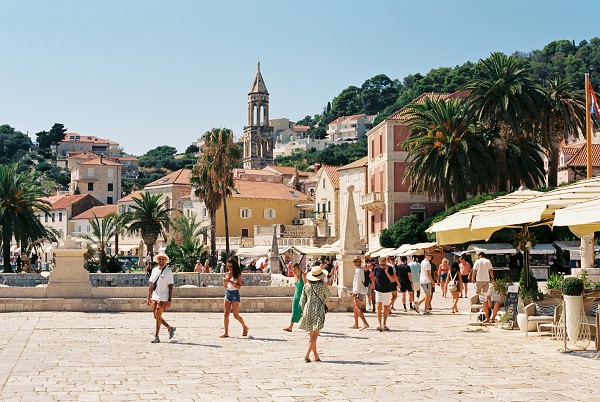
Sailing in Croatia in August
Beaches, marinas, and attractions are bustling, drawing in visitors from around the globe. This is the ideal time for those seeking a lively vacation experience filled with socializing and excitement. The warm sea temperatures and stable weather conditions make August perfect for water activities, from snorkeling to paddleboarding. However, be prepared for slightly busy marinas and anchorages during this period.
Sailing in Croatia in September
September offers a slightly more relaxed atmosphere while still retaining the charm and vibrancy of summer. Marinas and facilities continue to operate at full capacity, ensuring sailors have everything they need for a smooth journey. September is also an excellent time for those looking to enjoy the beauty of Croatia without the peak-season intensity, making it a favorite among seasoned sailors.
Events & nightlife
The summer months are when Croatia truly comes alive with various festivals, cultural events, and outdoor concerts. You can enjoy yourself in the local culture, music, and traditions during these festive gatherings.
The nightlife scene in Croatia peaks during the summer months, particularly in destinations like Pag, Hvar, Brač, Dubrovnik, and Split.
Most restaurants, shops, and services are open and fully operational during this time.
Sailing Croatia during Spring and Autumn (Shoulder season) - Overall best experience
Booking accommodations and sailing boats during the shoulder seasons is often easier compared to the summer months. You're more likely to find a broader range of options, and prices might be more reasonable as well.
The shoulder seasons are excellent for exploring Croatia's islands and can be more family-friendly, as there are fewer crowds and a more relaxed atmosphere.
Some events and festivals take place during the shoulder seasons, showcasing local culture, music, and traditions. These events can provide a unique glimpse into Croatian life.
Sailing in Croatia in May
May marks the beginning of the tourism season in Croatia, and it’s an ideal time for sailing the Dalmatian coast. The weather starts to warm up, and the longer days bring plenty of sunshine, but it’s also a time when the country is preparing for the full summer rush. Many smaller coastal towns and Dalmatian islands have begun to open up, with restaurants, cafes, and shops starting to prepare for the influx of tourists. However, not all establishments may be open yet, so it’s good to check ahead, especially in smaller places.
The weather in May is generally mild, with pleasant temperatures perfect for outdoor activities and sightseeing. The sea is warm enough for swimming, and it’s a great time for water sports. However, while daytime temperatures can be quite warm, evenings can still get chilly, and winds can pick up, so it’s important to pack appropriately for both warm and cooler conditions. When sailing, be sure to bring a warm jacket, as the nights on the water can be quite cool. The season is just getting started, and you’ll find fewer crowds compared to the busy summer months, making it an excellent time to explore Croatia’s islands and coastlines in a more relaxed, authentic atmosphere.
Sailing in Croatia in October
October offers a more tranquil sailing experience in Croatia, as the peak summer crowds have thinned out. The weather is cooler, and the winds can be stronger, which makes it perfect for those who enjoy more brisk sailing conditions. While the temperatures drop and the evenings become cooler, it’s still a wonderful time to enjoy the coast. You’ll find that larger cities such as Split, Zadar, Šibenik, and Dubrovnik continue to be bustling with tourists, with most attractions remaining open. However, some smaller tourist sites may begin to close for the season, so it's worth planning.
Though the temperatures may be cooler, and some parts of the country experience windier conditions, October offers the perfect opportunity to enjoy quieter marinas and less crowded beaches.
Sailing Croatia during Winter (Low season) in Croatia - Perfect for bonding with nature
Croatia's low season spans from November to April. During this period of reduced tourist activity, numerous establishments shuttered their operations, leading to limited choices in terms of boat charters, attractions, and activities. On the other hand, it offers you early booking activities and choosing your dates before everyone.
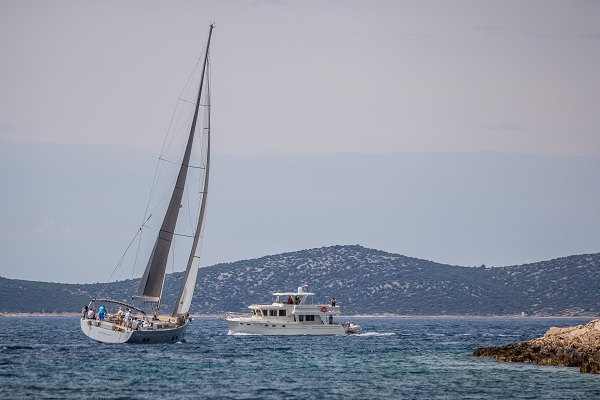
Weather
For those considering a trip to Croatia during this period, arriving with a focused itinerary or centering your visit around winter-exclusive activities is a way to go. In terms of weather, this timeframe tends to be chilly and damp, with certain regions experiencing temperatures below freezing. Coastal regions receive a substantial amount of rainfall. In most cases, temperatures range between 5°C and 15°C (41°F to 59°F), although this can differ depending on the specific location.
The weather during the low season varies across the country. Coastal areas tend to be wetter, experiencing a notable amount of rainfall. Inland regions can get colder, with some areas experiencing freezing temperatures. However, these conditions are perfect for those who enjoy winter landscapes and activities.
Crowds
The low season sees a decrease in tourist numbers, resulting in quieter attractions, less crowded streets, and a more serene atmosphere.
Many businesses, including hotels, restaurants, and shops, scale down their operations or even close during the low season due to the drop in tourist activity. As a result, travelers might find fewer options for accommodations, dining, and shopping. On the other hand, guests will get to try local cuisine prepared for Croatians by Croatians.
Activities
To make the most of your visit during the low season, consider engaging in activities that are exclusive to this time of year. Winter sports, festive holiday markets, and unique cultural experiences can offer a distinct perspective on Croatia's offerings.
Historic towns take on a cozy ambiance, and cultural sites are often more accessible without the usual crowds. The Adriatic Sea might be too chilly for swimming, but it offers a serene background.
To maximize your experience during the low season, it's important to plan. Research businesses that remain open, focus on winter-friendly activities, and have a flexible approach to your itinerary.
These winds play a significant role in the climate, weather, and sailing conditions of the Adriatic Sea. Due to these potential weather events, travelers often consider purchasing travel insurance that covers possible disruptions or unforeseen circumstances.
Sailing Dalmatian islands
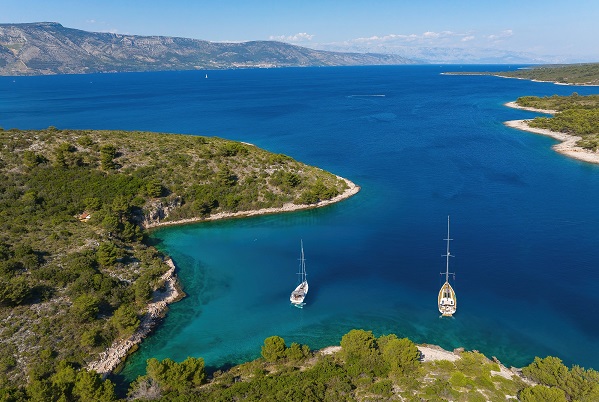
Cruising the Dalmatian Islands offers different experiences depending on the season. From quieter months like April and November to the busy summer period, the islands have something unique to offer throughout the year.
Dalmatian islands in April
April on the Dalmatian Islands brings a quieter, more authentic atmosphere. While most tourist attractions are still closed, the islands' charm lies in the slower pace of life. This is an ideal time to experience the islands' traditional way of life. The weather is still a bit cool for swimming, but it's a great time for sailing, as the winds and conditions are perfect for an adventuristic cruise. April is also the ideal time to visit major attractions like the famous Blue Cave on Vis, which opens on April 1st.
Dalmatian islands in May and June
As the season begins to ramp up, the Dalmatian Islands, especially those like Hvar, Brač, Korčula, and Vis, come alive. May is particularly special, as the islands start buzzing with life but are still less crowded than the peak summer months. This is the perfect opportunity to explore famous coves like Stiniva on Vis or beach Zlatni Rat on Brač, which can become overcrowded during the height of summer. The temperatures are warm enough for swimming, but the weather is still mild, making it an excellent time for both cruising and exploring the islands on foot or by bike.
Dalmatian islands in July and August
July and August are the prime months to cruise the Dalmatian Islands, as the weather is ideal for swimming and the islands are at their liveliest. However, these months also bring crowds to popular destinations. While some places like Gornja Krušica on Šolta and Smokova Beach on Vis remain peaceful, the popularity of certain hotspots can lead to crowded beaches. The vibrant atmosphere makes this time perfect for those seeking a bustling experience, but you may need to venture off the beaten path to find more secluded spots.
Dalmatian islands in September and October
The months of September and October offer a sweet spot for cruising the Dalmatian Islands. The weather is still warm, especially in September, perfect for swimming. October sees fewer tourists, allowing for a more relaxed experience on the islands. It's also a great time for more adventurous activities like cycling or road trips inland.
Dalmatian islands in November
By November, the Dalmatian Islands start to calm down, and the hustle of summer is a distant memory. The local population remains, and it's a fantastic time for those seeking a more peaceful and intimate experience. With fewer tourists, you can explore hidden coves and beaches, like the Pakleni Islands near Hvar, which are usually busy in the summer months. However, the weather can be windy, so experienced sailors should be prepared for challenging conditions. Some restaurants and services close for the season, so it's important to plan for dining options, but this is the best time to truly connect with the natural beauty of the islands.
In the winter months, the Dalmatian Islands become a peaceful retreat, with only residents remaining. While the natural beauty of the islands remains breathtaking, the weather can be challenging, with strong winds and cooler temperatures, making it suitable for experienced sailors.
Croatia’s unique sailing conditions and weather characteristics
While Croatia is generally considered a safe destination for travelers, it's important to note that certain natural weather events can occur.
- Flash floods can also occur in some regions, especially during periods of intense rain. (November till April)
- During the dry summer months, the risk of forest fires increases. Forested areas and rural regions can be prone to wildfires, which can spread quickly if not contained.
- Coastal regions may experience severe weather conditions, including thunderstorms, lightning, and heavy rainfall, particularly in the fall.
While not a weather event per se, it's important to note that the Adriatic Sea can experience rough waters and high waves during storms, potentially affecting maritime travel and activities. The winds in the Adriatic Sea during the high and shoulder seasons are generally suitable for sailing. The breeze tends to be consistent but not overpowering, allowing for smooth navigation and a pleasant sailing experience.
The Adriatic Sea is known for several distinct wind patterns that influence its weather and sailing conditions. There are 5 winds that can occur: Bura, Jugo, Maestral, Lebić, and Levant.
-
- Bura winds blow from the northeast or east-northeast and a cold and dry wind, often accompanied by clear skies.
- Jugo winds come from the southeast and is a warm and moist wind that brings humid conditions and sometimes rain. It can be associated with unstable weather.
- Maestral winds blow from the northwest and are a daytime sea breeze that brings cooler and more pleasant conditions. It typically occurs during the summer months, providing relief from the heat, and is especially common along the Croatian coast.
- Levant winds come from the east and is a moderate to strong easterly winds that can bring some rainfall. It is more common in the southern Adriatic and tends to occur during the transitional seasons.
- Lebić winds blow from the southwest and is warm and moist wind that can bring stormy weather and heavy rain, particularly to the western part of the Adriatic. They are more common in the fall and winter.
Best time to sail in Croatia – Timing is everything.
In conclusion, when it comes to sailing in Croatia, timing is indeed everything. While the allure of the summer months might be tempting, the shoulder seasons of May to June and September to early October offer a sailor's paradise that balances all the essential elements for an unforgettable maritime journey.
The gentle winds, agreeable temperatures, and reduced crowds create an idyllic backdrop for navigating the beautiful waters of the Adriatic. As you weigh your options, remember that the true essence of Croatia's coastal beauty and cultural treasures can be best savored when the sea is calmer and the sun gentler.
So, set your course for the shoulder seasons, choose your last-minute charter, and embark on a sailing adventure that unveils Croatia's coastal charm.
Which is the best month to visit Croatia?
June is the perfect month for planning your trip because the weather is delightful, the large tourist groups haven’t surged in, most Croatia's attractions are open, and the expenses remain reasonable.
When is the best time to sail the Dalmatian Islands?
The best time to sail the Dalmatian Islands is from May to September. For quieter marinas and mild temperatures, May and June are ideal, while July and August offer the warmest weather and vibrant island life.
When is the cheapest time to visit Croatia?
If you want to encounter the cheapest prices in this beautiful country, the best time for friendly budget trip is in the early Spring or late Autumn. May till June and September to October may not be peaks of the year, but they offer a spectrum of activities that are easy on the wallet.
What is Croatia known for?
Croatia is renowned for its stunning Adriatic coastline, historic cities, and captivating islands. It offers a rich blend of natural beauty, cultural heritage, and diverse experiences. Some of its notable features include the ancient walled city of Dubrovnik, the picturesque Plitvice Lakes National Park, and the vibrant islands of Hvar and Korčula. Croatia is also celebrated for its culinary delights, including seafood dishes, local wines, and traditional Mediterranean cuisine.
Does it snow in Croatia?
Yes, Croatia does experience snowfall, particularly in its northern and mountainous regions during the winter months.
When is the best time to cruise Croatia?
The best time to cruise Croatia is during the shoulder seasons – May, June, September, and October. You'll enjoy pleasant weather, fewer crowds, and lower prices compared to the peak summer months.
